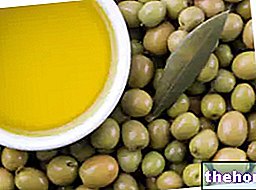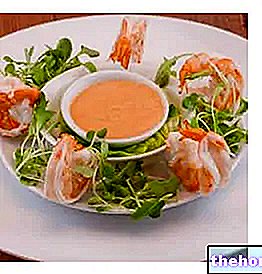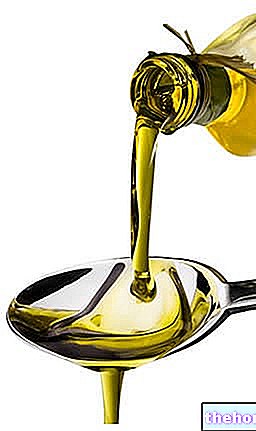
This last clarification is fundamental. In the various seed oil, for example, olive kernel oil - more often than pomace - and palm kernel oil - palm kernel can be present. On the other hand, the pericarp - pulp - of the same fruits is not used, from which olive oil is obtained in the first case and palm oil in the second.
, canola, corn, soy, peanut and olive.Obviously there is no lack of further refining processes, which depend on both the specific ingredient and the type of oil in question.
Rarely, various seed oils are produced from the first stage of processing, ie from mechanical-chemical extraction. Companies prefer to buy intermediates that are already partially processed. Further arrangements can follow, such as bleaching, deodorization or fractionation of fatty acids - commonly called "refining" - the addition of antioxidants - for example vitamin E - and the union in mixtures obtained from specific recipes.
For this reason, "various seed oil" can mean everything and nothing. There are various seed oils with chemical characteristics - therefore nutritional, with relative metabolic impact - and physical - smoke point, resistance to oxidation or peroxidation, general shelf life, etc. - totally different from each other.
The various seed oils are usually all of a fluid consistency at room temperature, which suggests a low percentage of saturated fatty acids. Without consulting the product label it is however impossible to identify the single percentages and the type of unsaturated (monounsaturated and polyunsaturated).
A various seed oil rich in essential omega 3 and omega 6 polyunsaturated fatty acids, respectively alpha linolenic acid (ALA) and linoleic acid (LA), on the one hand ensures a good metabolic impact - assuming the right ratio between omega 3 and omega 6 - but on the other hand it affects its use in cooking and conservation - with sensitivity to sunlight, high temperature, oxygen, free radicals etc. A good compromise is instead that of oils rich in oleic acid, a monounsaturated from the omega 9 family. This fatty acid, while having a positive effect on the metabolism, is also very resistant to cooking and is not easily damaged during storage.
The presence of antioxidants, fat-soluble and basically vitamins - such as tocopherols or vitamin E - is almost always the result of the addition of food additives. The processing techniques of various seed oils are based on mechanisms that damage or destroy the most delicate components raw materials, such as: thermolabile vitamins, phytosterols and polyphenols, chlorophylls, etc.
- seasoning fats and oils. It should have the role of providing the right amounts of essential fats, more generally of beneficial lipids, fat-soluble vitamins (especially Vit E and Vit A) and other antioxidants such as phytosterols.As we have said, the nutritional properties of various seed oil depend above all on the chemical composition of the product.
Not being able to use a single model to analyze, below we will propose an illustrative table on the characteristics of the main fatty acids that can make up various seed oil.
Furthermore, we specify once again that the usefulness of these foods depends above all on the chemical and physical properties. In practice, their predisposition for raw dressing or for frying can only be established, in this specific case, by consulting the nutritional label. .
In general, we can say that a various seed oil rich in polyunsaturated unsaturated molecules lends itself to raw dressing. If with a prevalence of monounsaturated, it can also be used for cooking. Although rarely, if it contains a lot of saturated fats, it is more suitable for frying - but it has negative nutritional characteristics and it is recommended to use it moderately and sporadically.
Other Foods - Oils and Fats Peanut Butter Cocoa Butter Butter Greaves Wheat Germ Animal Fats Margarine Vegetable Cream Tropical Oils and Fats Frying Oils Vegetable Oils Peanut Oil Borage Oil Rapeseed Oil Krill Oil Poppy Seed Oil Seed Oil Pumpkin Avocado oil Hemp oil Safflower oil Coconut oil Cod liver oil Wheat germ oil Linseed oil Macadamia oil Corn oil Almond oil Hazelnut oil Walnut oil Olive oil Palm oil fish Rapeseed oil Rice oil Pomace oil Seed oil Soybean oil Grapeseed oil Extra virgin olive oil Sesame seeds and sesame oil Lard OTHER ARTICLES OILS AND FATS Categories Food Alcoholics Meat Cereals and derivatives Sweeteners Sweets Offal Fruit Dried fruit Milk and Derivatives Legumes Oils and Fats Fish and fishery products Salami Spices Vegetables Health recipes Appetizers Bread, Pizza and Brioche First courses Seconds pi acts Vegetables and Salads Sweets and Desserts Ice creams and sorbets Syrups, liqueurs and grappa Basic Preparations ---- In the Kitchen with leftovers Carnival recipes Christmas recipes Light diet recipes for Celiacs Recipes for Diabetics Recipes for Holidays Recipes for Valentine's Day Recipes for Vegetarians Protein Recipes Regional Recipes Vegan Recipes



























